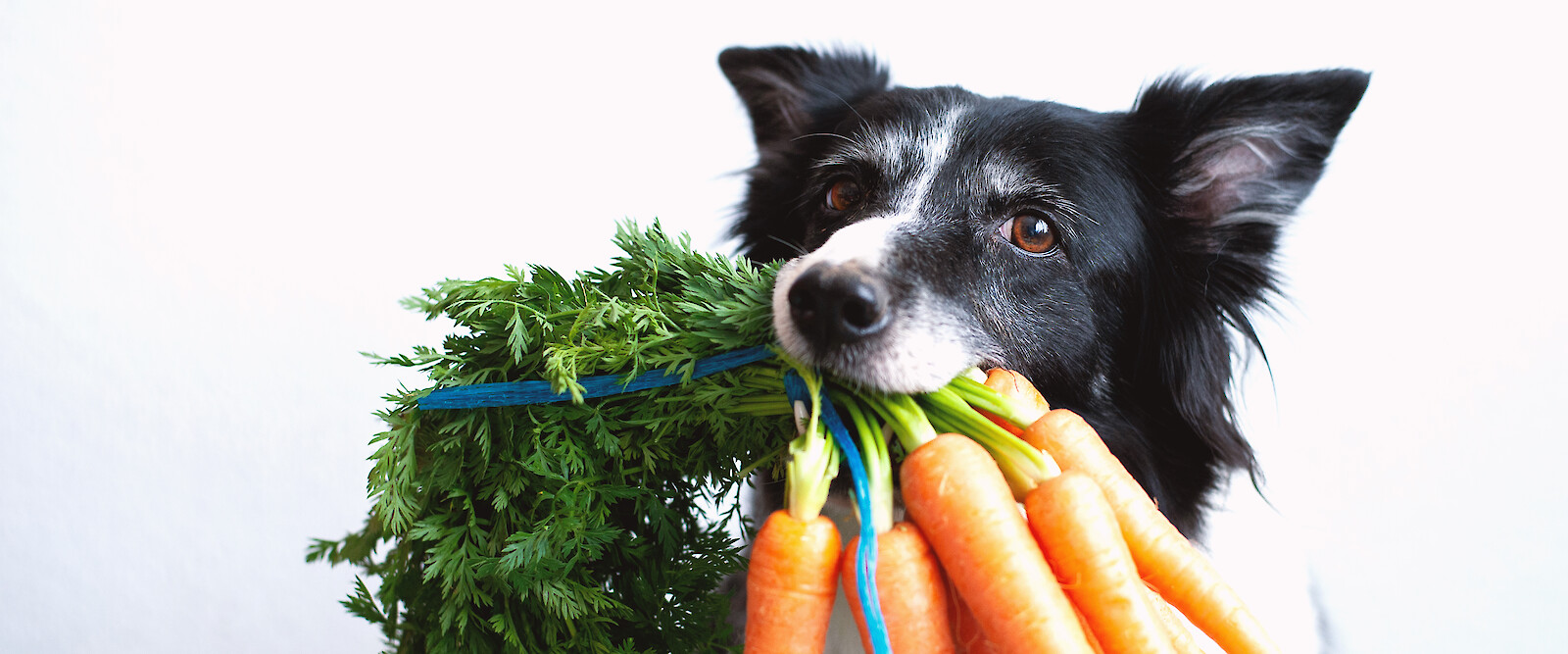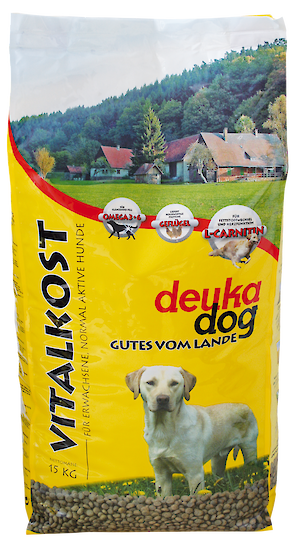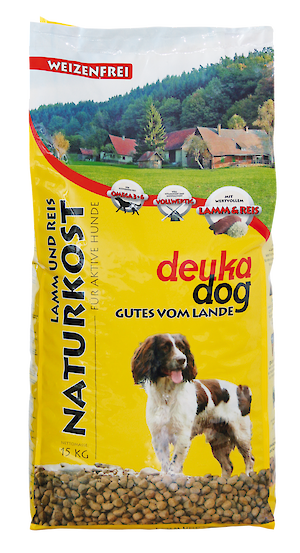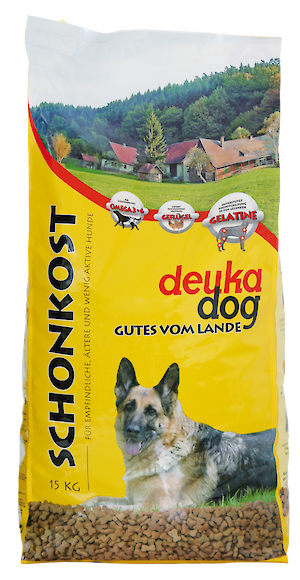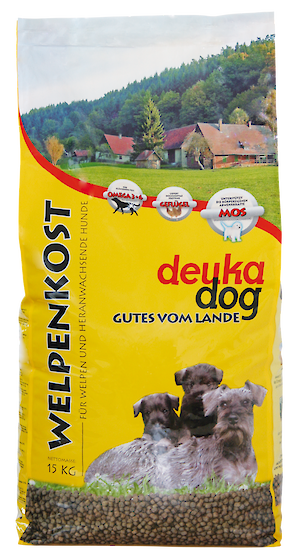Species-appropriate dog feeding: dry food, barfing or vegan diet?
Feeding dogs correctly: This is what you should consider when choosing food
"How should I feed my dog properly?" "What is a species-appropriate diet?" And: "How do I ensure the care of my four-legged friend?" There is a lot of discussion about these and similar questions. Answering them is more difficult than one might think. After all, living together with humans has shaped the modern dog's eating habits just as much as its digestion. The following article reveals what dogs need with their daily feeding and whether modern feeding trends such as a vegetarian or vegan diet or barfing are well suited for their care.
Similarities and Differences: Diet and Digestion of Dogs and Wolves
The dog's ancestry is more complex than was thought for years. According to the latest findings, the lineages of wolf and dog separated as early as 11,000 to 16,000 years ago. Originally, dog and wolf descended from a common, wolf-like ancestor. For this reason, dogs and wolves still share physiological characteristics today. These include, for example, the anatomy of the gastrointestinal tract and which food components they need to survive.
Like its ancestor, the dog is a carnivore (Latin: caro vorare). Physiologically and genetically, however, dogs and wolves are now quite different from each other. In the course of domestication, the structure of the dog's digestive tract has adapted more and more to living together with humans. This can be seen above all in two important differences:
Especially the genes that regulate the digestion of starch differ in wolves and dogs. For example, the dog today has more enzymes for the breakdown of starch than the wolf. It is thus able to use a larger amount of carbohydrate-rich components (e.g. cereals) for its energy supplythan its relative roaming in the wild.
Contrary to popular belief, even the wolf does not only eat meat. The skilled hunter devours prey animals almost completely. As a result, it also ingests plant matter (which can be found, for example, in the intestines of hunted rodents). In this way, the wolf ensures its supply of vital nutrients. When food is scarce, wolves sometimes resort to a diet of fruits, grasses, roots or leaves. The assumption that wolves and dogs only need muscle meat for a complete diet is therefore not true.
The energy consumption of a wolf is much higher than that of a dog. One reason is their different lifestyles: An average wolf is much more active than its cousin living with humans. Wolves cover up to 100 kilometres per night in the wild. They also have to expend much more energy to keep their bodies warm on cold nights - quite unlike a domestic dog in a heated flat. Wolves therefore consume up to 21 % of their body weight in food every day to meet their energy needs. The dog only 2 %.
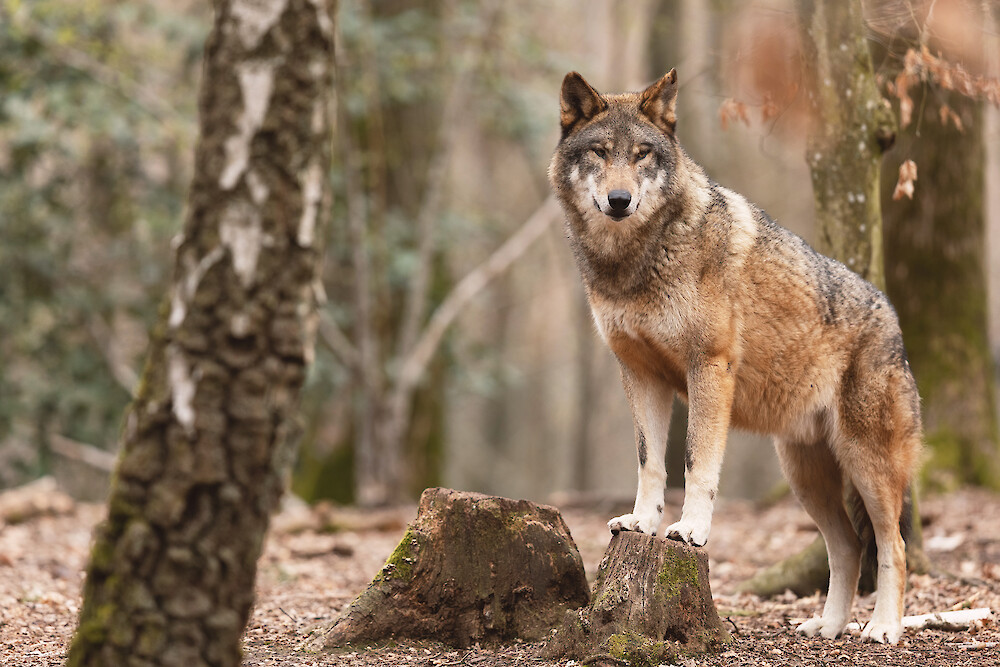
The right nutrient mix: What the dog needs with the food
Balanced dog food contains a number of vital nutrients. Only if the four-legged friends are sufficiently supplied, they are alert, vital and have the best prerequisites for a long, healthy life.
What dogs need with their daily feeding
The functions of proteins(syn. albumen) in the body are manifold. Dogs need protein mainly to build muscles, new tissue or breast milk. Thus, it is important for the healing of wounds and during growth. The body's own building block is made up of a variety of complex chemical compounds called amino acids. These include, for example, isoleucine, leucine, lysine, methionine, phenylalanine, threonine, tryptophan, histidine, arginine and valine. They are all essential for the dog's survival and health. Since the body cannot produce them itself, they are considered "essential amino acids". Dogs must ingest them through dog food. Meat already contains a sufficient amount of amino acids.
Fats are valuable energy suppliers. Their most important components are so-called fatty acids, which are crucial for the dog's growth, reproduction and condition. Some Vitamins (e.g. vitamin A, vitamin D, vitamin E and vitamin K) are fat-soluble and can therefore only be digested by the organism together with fat. Fats are found in both animal and plant food.
Poultry fat has a particularly high digestibility. In particular, the content of polyunsaturated fatty acids (e.g. omega-3 and omega-6) makes it an extremely valuable component in dog food.
Carbohydrates are the most important energy-providing plant components. They are found in dog food mainly in the form of rice, potatoes and cereals. Carbohydrates also make up dietary fibre, which has a positive effect on the stomach and intestinal function. The dog's gastrointestinal tract can only process raw plant parts insufficiently. Therefore, vegetable carbohydrate sources in dog food are first cooked and specially prepared, which makes them particularly digestible.
Vitamins and minerals are essential for life in small quantities. Numerous reactions and processes in the body depend on their intake. Without vitamins and minerals, dogs cannot produce hormones, enzymes or red blood cells. They support digestion and are also involved in the control of many biochemical processes. Dogs need to take in vitamins and minerals with their food. For an adequate supply of vitamins and minerals, a proper, balanced diet plays a key role.
Water is the source of life - this also applies to dogs. For the maintenance of all bodily functions, dogs need the cool liquid in sufficient quantities, which fulfils the following tasks in the body, for example:
- Water serves to transport nutrients from the food,
- Water enables the excretion of urine (syn. urine) via the kidneys,
- Water regulates body temperature.
The amount of water a dog needs daily depends on many factors. "How much does he move? What is the temperature in the environment? How much water has he already taken in with his food?" However, as a general rule, dogs, like cats, need about 45-65 millilitres per kilogram of body weight every day. A full-grown Labrador therefore needs about 1.4 to two litres. Depending on whether the dog eats dry food or wet food, it needs the remaining amount in addition.
Food trends in dog feeding - what's really on them?
Barfen - the most natural form of dog food?
Bones and raw food - that's what Barfen stands for Bones And Raw Foods). This food trend is becoming increasingly popular among dog owners. Meals include only raw meat, bones, offal, vegetables and fruit - and sometimes grain products. Proponents of this way of feeding dogs believe that barfing is closest to the diet of the wolf. They therefore call barfing the most species-appropriate form of feeding for dogs. But is this really true?
Too much protein in barfing?
Barfing is based on the assumption that wolves and dogs alike need (a lot of) meat for a diet that meets their needs. However, after thousands of years of domestication, the dog's eating habits have changed, as have the functions of the digestive system. Dogs only need about half the protein that wolves consume on average. And even then, they are already sufficiently supplied (see info box).
Average protein requirement dogs
A dog's protein requirement depends on its size and weight:
| Your dog's body weight | Minimum intake (grams per kilogram of body weight) | Recommended daily requirement (grams per kilogram of body weight) | Recommended maximum amounts (grams per kilogram of body weight) |
| 5 | 1,7 | 3,3 | > 7 |
| 10 | 1,4 | 2,8 | > 7 |
| 15 | 1,3 | 2,5 | > 5 |
| 20 | 1,2 | 2,4 | > 5 |
| 25 | 1,1 | 2,2 | > 5 |
| 30 | 1,1 | 2,1 | > 4 |
| 35 | 1,0 | 2,1 | > 4 |
| 60 | 0,9 | 1,8 | > 4 |
Source: Meyer, H.; Zentek, J.: Nutrition of the dog, 2010
With barf meals, dogs usually consume more protein than they actually need. The problem here is that the four-legged friends have to eliminate the excess protein from their bodies. This puts a strain on their metabolism and especially on their liver.
Raw meat as an alternative for feeding sensitive dogs?
Often, owners of barfing dogs say they are changing their pets' diets because of digestive and skin (and coat) problems. This was the result of several surveys among dog owners between 2012 and 2016. But especially if dogs suffer from allergies or intolerances and their intestines react sensitively to food, you should be cautious when feeding raw meat. This is because raw meat is a potential source of bacteria (e.g. salmonella and campylobacter) that can upset the intestinal flora.
If you have an intolerance to animal protein, hydrolysed dog food is recommended instead. During hydrolysis, the protein contained in the food is broken down to such an extent that the dog's organism no longer recognises it as animal protein. As a result, antibodies are no longer formed against it and inflammatory reactions do not occur.

Advantages of barfing: knowledge of all ingredients and better teeth
However, barfing also offers some advantages: dog owners have a precise overview of all the ingredients in the food bowl. This makes it easier to feed sensitive dogs and those with intolerances. However, this form of feeding also requires precise knowledge of dog nutrition. Uninformed dog owners must first get detailed information before they change their pet's diet. Otherwise there is a risk of deficiency symptoms. Less experienced owners often find it difficult to assess the quality and composition of the food.
So far, there are no reliable findings on the long-term effects of barfing on dogs' health. Recent studies show that the dental health of dogs fed barf improved due to the bone feeding. However, the quality of coat and faeces remained largely unchanged - contrary to the owners' expectations.
Knowing what's in the feed - feed analysis
Did you already know? If you want to know exactly what is in dog food, take a look at the feed analysis. The exact nutrient information on each package allows dog owners to see the ingredients of the food. This is especially important for owners of sensitive dogs who need to know the exact ingredients of the dog food. There is also precise information on the correct dosage.
Vegetarian & vegan nutrition for dogs: Is it possible without meat?
Vegetarian or vegan diets are in vogue: so it's not surprising that some dog owners are changing their faithful companions' diet to a meatless, eggless or dairy-free option. Even if the dog's nutritional physiology is not geared towards a purely plant-based diet, dogs are still able to digest a vegetarian or vegan meal. Ultimately, it would depend on the correct nutrient composition that the dog takes in with the food and not from which raw materials it comes. Therefore, feeding on a purely vegetable basis would be possible. This is how proponents argue.
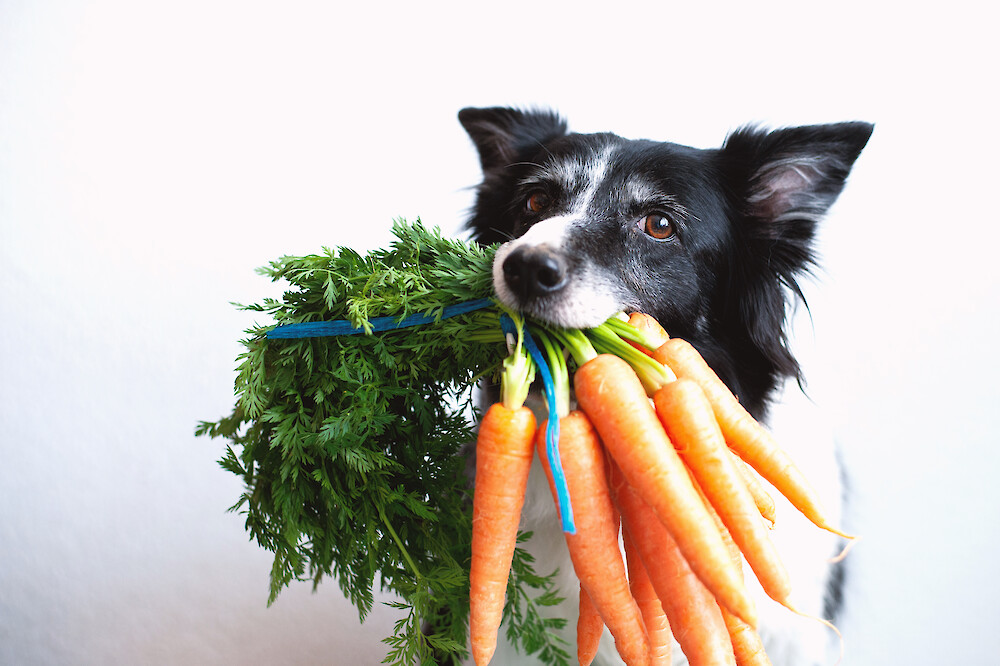
The fact is: neither dogs nor wolves eat a completely meatless diet. When given the choice, dogs always give preference to meat-containing food. Dogs can digest vegetarian and vegan meals. This is what studies show. However, there is no reliable information on the long-term effects of a purely plant-based diet on dogs. However, dog owners should not underestimate the risks of deficiencies. After all, if the worst comes to the worst, there is also a risk of health consequences.
Vegetable protein is not easily accessible for dogs
Vegan and vegetarian diets use alternative sources of protein (e.g. from legumes such aspeas). Unlike protein from meat, milk or eggs, dogs cannot utilise these as well. The reason: in order to renew dead or damaged tissue (e.g. skin or muscles), the body needs protein from the food. The more this protein resembles that of the tissue, the easier it is for dogs to use it. Animal proteins from milk and meat, but also vegetable soy protein can be used very well by dogs. This is referred to as high biological value. With a purely plant-based diet, dogs must therefore consume considerably more food to cover their protein requirements, as plant protein is not readily accessible to dogs.

Vegan and vegetarian feeding as a solution for feeding problems
However, a change to a meat-free diet can make sense in exceptional cases: Intolerances can cause dogs to be sensitive to meat. Dogs prone to allergies can develop antibodies against meat. This can lead to digestive problems and discomfort. If dog owners change the dog food more often at a time when the dog's intestines are already sensitive, the four-legged friend may develop antibodies against not just one, but many different types of meat. Inflammations increase and feeding commercial dog food becomes a suffering problem. Vegan or vegetarian feeding offers a possible solution here.
If dog owners nevertheless dare to change their dog's diet, they should discuss this form of feeding in detail. In any case, discuss a planned change with your veterinarian beforehand. In this way, you can avoid long-term incompatibilities and ensure a complete supply of all vital nutrients for your dogs.
Feeding your dog correctly - How to choose the right dog food
Choosing the right dog food should be based on your dog's individual needs. The diet is appropriate if it covers the nutrient requirements and at the same time takes into account the digestive-physiological characteristics of the dog breed. That sounds difficult? But it doesn't have to be!
Commercially available dog food provides your four-legged friend with all the nutrients he needs for a vital life. Most food - whether wet or dry food - is therefore designed as a complete food. This means that they are sufficient to provide your loved one with a balanced diet. The ingredients of modern dog foods (e.g deuka dog) are precisely tailored to the dog's life situation and age. If you want to offer your dog more variety, add a meal of raw dog food once a week. This provides extra chewing fun!
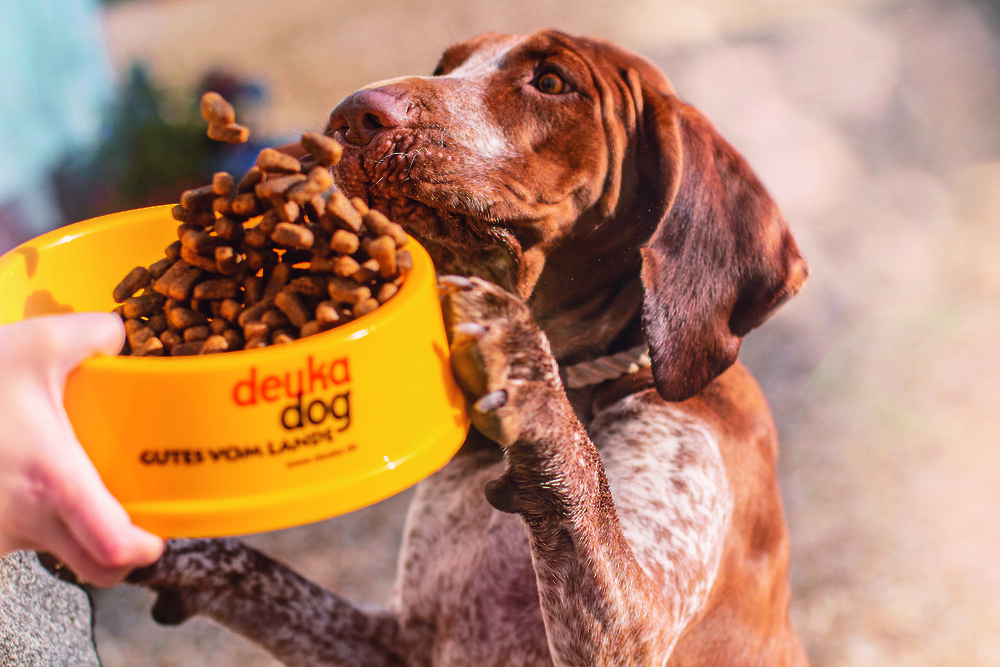
Dog food for agile and active dogs
For agile and active dogs, varieties with a higher content of crude protein and crude fat are recommended. Such foods also need sufficient carbohydrates - they provide energy for fast sprints and high jumps. Additives such as L-carnitine ensure a strong heart and extra vitality. This protein compound consisting of amino acids supports fat metabolism and heart function.
Dog food for senior dogs
Older, quiet or overweight four-legged friends need a balanced diet with moderate protein and fat content. Dog food for senior dogs therefore has a calorie-reduced formulation. In this way, the energy in the food corresponds to the movement and activity of the animals and thus prevents overweight. A mix of essential vitamins and minerals protects against deficiencies that often occur in dogs as they get older. Gelatine protects against the consequences of weak joints in old age. It promotes collagen synthesis in the joints and thus strengthens cartilage formation for more mobility, even in old age.
Dog food for puppies and young dogs
Puppies and young dogs need a dog food that promotes even growth. To ensure that puppies eat enough food for their development, puppy food should be particularly tasty and easy to digest. Poultry meat has proven to be particularly suitable. To support the still young immune system, puppy food contains natural additives such as mannan-oligosaccharides. The prebiotic from yeast harmonises the intestinal flora and keeps the immune system in balance.
Conclusion - Feeding dogs correctly
- Dogs and wolves are descended from common ancestors. However, living together with humans has changed the eating habits of dogs and their feeding.
- For a balanced diet, dogs need a food mix of protein, fat, carbohydrates, vitamins, minerals and water.
- Barfing provides dogs with raw meat, bones, offal, vegetables and fruit. These diets are suitable for sensitive animals to a limited extent and require a good knowledge of the dog's needs.
- A vegan or vegetarian diet does not contain any animal ingredients. This offers advantages for dogs with intolerances, but caution is advised due to the moderate value of plant ingredients.
- Dog food (e.g deuka dog) are suitable for complete feeding. Depending on size, weight, breed and living conditions.
Image sources: © Dvorakova Veronika - stock.adobe.com / © AB Photography - stock.adobe.com / © Evelina - stock.adobe.com
Contact person

Theresa Oesterwind
Contact person




